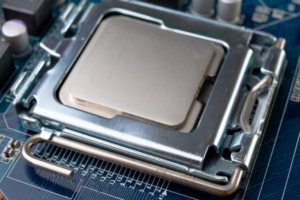How To Replace A Faulty Graphics Card
In today’s digitally driven world, having a well-functioning graphics card is pivotal. Whether you’re a hardcore gamer, a professional 3D artist, or simply someone who enjoys a crisp Netflix binge, a faulty graphics card can make your digital life miserable. Fortunately, replacing it isn’t as complex as it might seem! Follow this step-by-step guide to replace your faulty graphics card and restore your digital life to normalcy.
Understanding The Symptoms Of A Faulty Graphics Card
The first step in rectifying a problem is identifying it. A faulty graphics card may exhibit a few common symptoms like graphical glitches, screen freezing, or sudden system shutdowns. Refer further to this comprehensive guide on our website for more details.
Purchasing The Right Replacement
Choosing the right graphics card is crucial. Consider factors such as the power supply, motherboard compatibility, physical space in your PC case, and your specific needs. If you’re a gamer, you might want to invest in a high-performance GPU. However, for general use, a mid-range card should suffice.
Removing The Faulty Graphics Card
Before replacing your graphics card, ensure you have unplugged your PC and removed all connections. Open the case and locate the graphics card. It’s typically the piece directly inserted into the motherboard’s PCI Express slot, usually with a fan. Unscrew the card from the case and carefully pull it out of the slot. Remember to ground yourself before touching any internal components as static electricity can cause damage.
Installing The New Graphics Card
Now, it’s finally time to install your new graphics card. Align the graphics card with the PCI Express slot and push it in. Once it’s secured, screw it back into the case. Reattach any power connectors that the card needs. Here’s a detailed guide on our website to assist you.
Installing The Necessary Drivers
The new card will need appropriate drivers to function correctly. These can usually be found on the manufacturer’s website. It is, however, important to uninstall the old drivers first to prevent any conflict.
Testing The New Graphics Card
Once the drivers are installed, it’s time to test the new card. Monitor the temperature, run a few heavy-duty games or software, and look for any glitches or crashes. If everything runs smoothly, you’ve successfully replaced your faulty graphics card!
By following these steps, you can replace a faulty graphics card all by yourself. Don’t let a malfunctioning graphics card hamper your digital activities – take control and restore your PC’s performance today. For any further assistance or related resources, feel free to visit our website LFO.



